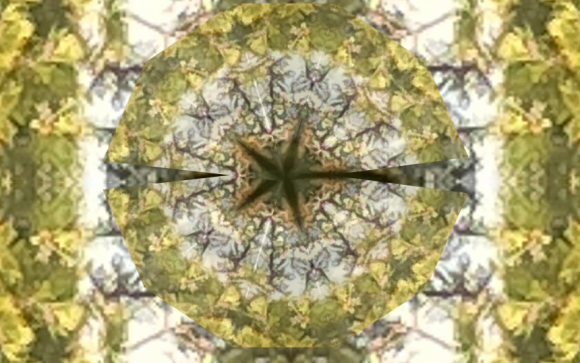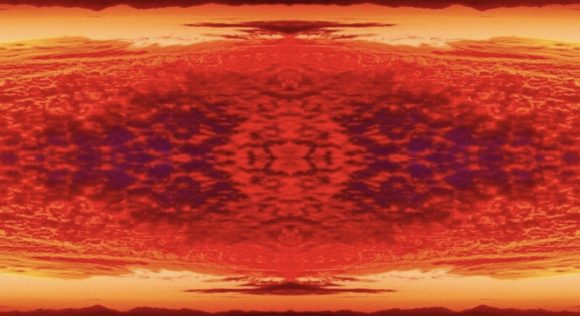Jung’s two essays on synchronicities (GW VIII, §§ 816-958) and on spirit in the fairy tale (GW IX/I, §§ 384-455) have a striking claim in common: that there is a “hidden meaning [Sinn] behind the chaotic events in life”. That claim is not a theoretical one: it is not something Jung puts forward as a hypothesis. Rather, it is a descriptive claim — it formulates an idea he finds in various psychological expressions: as dream images, delusional ideas, mythological figures, fairy tale characters, and of course, as organizing [anordnender] factor behind the events of life. As the latter, it shapes both the physical world and the psychical world, and sometimes, it shapes them both at once and produces synchronistic patterns.

1. It is a theoretical claim of Jung’s, of course, that all these various expressions are in fact expressions of the same idea (or variations on that idea). That is why he would call it an archetypal idea: ‘archetypal’ is the term he uses for psychological expressions which he finds recurring, not just in people nowadays, but also in old stories, and which have a “mythical or archaic” character (GW VI, §§ 691ff.).
It is true, however, that Jung’s later work develops the notion of “archetype” in various directions, not all of which can be easily reconciled with each other; and now, more than half a century later, there have been other thinkers who have enriched and changed the notion as well. (There is, for example, a movement towards “archetypal psychology”, notably put forward by James Hillman.) Any discussion nowadays that uses the word “archetypal” is bound to reverberate with a broader and deeper meaning than the one in the quote above.
So perhaps we should not become too fixated on this particular piece of terminology. The basic finding in those two essays of Jung’s, i.e. what I have called the “archetypal idea of a hidden meaning behind chaotic life”, is simply the notion that people sometimes have a compelling subjective experience that certain chaotic events in their life are no mere coincidences (although they often concede that, objectively, they probably are), a subjective experience they may express as “it’s as if there is a hidden meaning to all this”. The finding is phenomenological, in the sense that we find that this is how it appears to people. Jung tended to capture this phenomenology with “archetypal idea” as catch phrase: to call it “archetypal”, in his sense, merely means to add that this appearance is a) quite common, and b) mythic and archaic in character.
2. With this cautionary note about terminology out of the way, it will be interesting to compare how the two essays introduce the core finding. As I see it, there is an interesting commonality, and one important difference. (“Important”, because it is not just a difference in nuance or formulation, of which there are plenty.)
The commonality is that in both essays, what triggers the sense of a “hidden meaning” (i.e. what triggers or “constellates” the archetype) is a certain kind of situation.
In the essay on spirit, the archetype (personified, say, as Wise Old Man) appears in “hopeless and desperate situations”, and then provides insight — gives the situation meaning and shows a path forward. In other words, there are certain kinds of situational patterns which constellate the archetype.
The corresponding type of situation, according to Jung, also gives rise to synchronistic phenomena. He explicitly points to his famous “scarabaeus” example, and then notes that again this is a type of situation where there is “a certain impossibility” (GW VIII, § 847). The language he uses to describe the situation corresponds strikingly to that which he uses in the spirit essay (and similar passages, of which I have collected several ones here). There is “no way out to be seen” (“sich nirgends ein Ausweg abzeichnete”, ibd., §848), there is “half unconscious alarm” (“halb unbewußte Besorgnis”) and again “no possibility of a sufficient recognition of the situation” (“keine Möglichkeit eines genügenden Erkennens der Situation”, ibd.). (Curiously, Jung sees this kind of distressful situation even for the subject of the notorious Rhinean ESP experiments, who see themselves confronted with “the impossible task”.)
It is this sort of situation which often triggers the archetype (ibd., § 847), and in the context of the synchronicities essay, that means that such types of situations frequently give rise to synchronistic phenomena. (Whereas in the spirit essay, it means that the Old Man or some other personification enters the stage.)
3. I said there is an important difference between the two essays, in how they introduce the core finding that people often experience a “hidden meaning behind the events of life”. The difference is that the essay on spirit deals with personifications of the archetype (the “hidden meaning”, or Sinn), whereas the synchronicities essay postulates the same, archetypal “hidden meaning” as a principle: the “principle of synchronicity” (as contrasted with the causality principle), aka the mediaeval principle of “correspondences”. In the same mould, it is also called a “formal factor” (GW VIII, §§ 934 and 936), or an “abstract notion” (ibd., §§ 937-938).
Now we have already seen that in Jung’s view, archetypes don’t necessarily have to show up only as persons: there are archetypes of situation, and even abstract ones such as an “archetype of order” (i.e., numbers; compare GW VIII, § 870) or an archetype of a wholly integrated psyche (aka the Self). No surprise, then, that the archetype of a hidden meaning can appear as an abstract “principle of correspondence” (or “synchronicity”).
What is interesting, however, is that the archetype of a hidden meaning appears both personified (as Wise Old Man, helpful animal, etc.) and as an abstract principle. This produces a number of questions which to explore seems promising. First of all, can we even be sure that it is the same archetype? (Is that just an interpretation? And if so, then based on which similarities?) Also, is it all archetypes that can appear both as persons and as abstract ideas, or only some of them? (My guess is that Jung would affirm the former; at the very least there is one other archetype, namely that of the Self, which also appears sometimes personified, i.e. in Christian religion as Christ figure, and sometimes symbolized by such varying things as fish and mandalas.) Moreover, are there some interesting criteria for when an archetype would appear as person and when it would be rather reflected as abstract symbol? Does it depend on the situation when they are triggered? Does it depend on the subjective way in which someone experiences the archetype, i.e. is it a phenomenological distinction? Is it rather a particular style of projection? Or is there something in the structure of the archetypal pattern itself that tends to produce sometimes personifications and sometimes abstract ideas?




[…] have written last week about a certain point Jung makes both in the synchronicities essay and in the spirit essay. The […]
[…] is more than a trivial observation. As we have learned from Hillman, personifying is a mark of the workings of soul (not spirit; and […]
[…] the end of a much earlier post, I have posed the question whether there is a reason behind the fact that the archetype of a hidden […]